| Image | Plant | Status | Notes | Events |
|---|---|---|---|---|
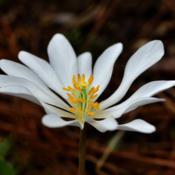 |
Bloodroot (Sanguinaria canadensis) |
Have Plant Collected or purchased 2023 Perennials Native Wildflowers Part Shade Full Shade Plants Successfully Growing |
2023 Chicagoland annual plant swap - Mone | May 14, 2023: Obtained plant May 15, 2023: Transplanted (Into the shade garden by the firepit.) |
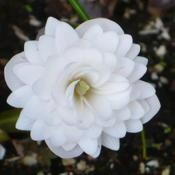 |
Bloodroot (Sanguinaria canadensis 'Multiplex') |
Have Plant Collected or purchased 2024 Perennials Flowers Native Wildflowers Part Sun Part Shade Full Shade |
2024 Chicagoland Annual Plant Swap - Mone | May 30, 2024: Transplanted (Into Shade Garden by burn pit.) |
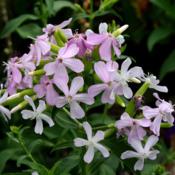 |
Soapwort (Saponaria officinalis) |
Have Plant Collected or purchased 2023 Perennials Medicinal Flowers Native Wildflowers Full Sun Part Shade Stratify Direct Sow Winter Sow Plants Successfully Growing |
From DnD Swap - phakewishard - okieheart - 12-2020 2023 Chicagoland Annual Plant Swap - crtvdsn (Fern) Saponaria is a medium-sized genus of about 40 species worldwide, but only 2 of them are found in North America; both of those are non-native. The one presented here is Saponaria officinalis, found in every state except Alaska and Hawaii. |
April 27, 2021: Seeds sown (Plug flat two row 14) |
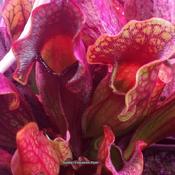 |
Purple Pitcherplant (Sarracenia purpurea) |
Have Collected or purchased 2023 Perennials Flowers Native Wildflowers Full Sun Part Sun |
twf - 2023 https://www.growcarnivorouspla... Purple Pitcher Plant is native to swampy, humid regions of North America and is an unusual carnivorous plant you can grow indoors. Upright leaves are tubular, the tops slightly bent over like a hood. These "pitchers" contain sweet juices that lure insects. Once an insect is inside, it is unable to escape the slippery slope and is digested by the plant's juices. Pitcher colors and shapes vary by subspecies. S.p. venosa has dark purplish-red pitchers and bright green hoods with prominent purplish-red veins. S.p. purpurea is mostly purplish red with some green on the inside. Mature plants will send up flowers in summer. And they are spectacular -- nodding umbrellas rising above the pitchers on tall stems. Flowers are made up of 5 petals and 5 sepals and may reach up to 3 inches (7 cm) wide. Bloom colors vary by subspecies and may be dark red, purple or pink. Caring for Purple Pitcher Plants Year-Round No blooms? If you bought a young plant at the store, you won't see flowers on it for a few years. Be patient. Repot only when pitchers become too crowded. Use a wide pot to make room for growth. Because of its unquenchable thirst, it's a good idea to pot Sarracenia purpurea in a shallow pot with drainage holes and place it in a saucer. Go ahead and water from the top, allowing the water to flow through the pot. You won't need to empty the saucer -- Purple Pitcher Plant will drink that up, too. Winter care. Purple Pitchers may go dormant in winter. Water just enough to keep the potting medium barely moist, but don't allow it to dry out completely. Cooler winter temps will suit them, but do not expose Keep them in bright light/direct sun year-round. purple pitcher plant, sarracenia purpurea Purple Pitcher Plant Care Tips Origin: East Coast of the US and Southeastern Canada Height: Leaves 6-in (15 cm); Flowers up to 1 ft (30 cm) Light: Purple Pitchers thrive in bright locations with some direct sun. Sunlight will deepen the red/purple color of their leaves. Water: Water generously throughout the growing season, keeping the soil evenly moist. Use rainwater or distilled water because the chemicals and minerals found in tap water will harm the plant. Never allow the potting mixture to dry out. Humidity: Moderate to high (above 50% relative humidity). Set the plant on a humidity tray to raise the moisture around it. Temperature: Cool to average room temperatures 60-70°F/16-21°C. Sarracenias will tolerate a minimum of 40°F/4°C in winter. Soil: Sarracenia purpurea needs a medium that's free of nutrients and allows good drainage. Use a mixture of 1 part sphagnum peat moss and 1 part perlite or horticultural sand. DO NOT use potting soil or compost because it will kill the plant. Fertilizer: Do not fertilize. Propagation: Divide plants when they are crowded in the pot. Or sow seeds in spring. Hardiness: 3 – 9. |
|
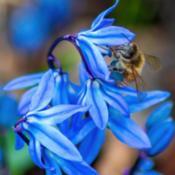 |
Siberian Squill (Scilla siberica) |
Have Perennials Flowers Native Wildflowers |
||
 |
Black Salsify (Scorzonera hispanica) |
Have Seeds OP Collected or purchased 2024 Perennials Edibles Medicinal Flowers Native Wildflowers Fruits & Vegetables Greens Roots Full Sun |
SM 2024 Zones 5-9. 120 days. |
|
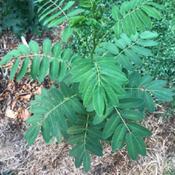 |
Wild Senna (Senna hebecarpa) |
Have Seeds Collected or purchased 2024 Perennials Medicinal Flowers Native Wildflowers Herbs Full Sun |
EARLY SPRING SEED EXTRAVAGANZA #1 - 2024 - Mimistime - Outsidepride 2023 Zones 3-8. |
|
 |
Maltese Cross (Silene chalcedonica) |
Have Perennials Flowers Native Wildflowers |
From R. PA 9-2020 | April 27, 2021: Seeds sown (Plug flat two row 18) May 9, 2021: Plant emerged |
 |
Cup Plant (Silphium perfoliatum var. perfoliatum) |
Have Plant Collected or purchased 2023 Perennials Flowers Native Wildflowers Plants Successfully Growing |
June 30, 2023: Transplanted (Into Sun Garden Two.) | |
| Blue-eyed grass (Sisyrinchium sagittiferum) |
Have Plant OP Collected or purchased 2024 Perennials Flowers Native Wildflowers Full Sun Part Shade Plants Successfully Growing |
2024 Chicagoland Annual Plant Swap - figkerl | May 24, 2024: Transplanted (At the close end of Garden Two.) | |
 |
Carrion Flower (Smilax herbacea) |
Have Perennials Edibles Flowers Native Wildflowers Vines |
Growing in garden. | |
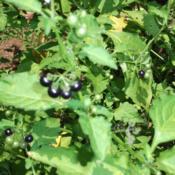 |
Garden Huckleberry (Solanum nigrum 'Chichiquelite') |
Have Collected or purchased 2022 Edibles Medicinal Flowers Native Wildflowers Fruits & Vegetables |
A.H. Fergus Falls, Maine 12/16/2022 Sweet purple berries are great fresh or cooked. These make wonderful pies, jams, jellies, and other sweets! They are much like Wonderberry but are larger in size and give heavier yields. Very easy to cultivate and you can have fresh fruit to harvest in as little as 70 days. |
|
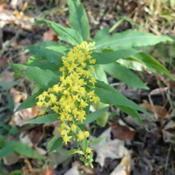 |
Bluestem Goldenrod (Solidago caesia) |
Have Seeds Collected or purchased 2024 Flowers Native Wildflowers Herbs Full Sun Part Sun Part Shade Full Shade Stratify Needs Light |
EARLY SPRING SEED EXTRAVAGANZA #1 - 2024 - mmolyson - 2023 Keystone species host to the Wavy-lined Emerald. Not aggressive. Stratify 60 days. 2-5 years to maturity. |
|
 |
Arrow Aster (Symphyotrichum drummondii) |
Have Perennials Flowers Native Wildflowers |
||
 |
Dandelion (Taraxacum officinale) |
Have Edibles Native Wildflowers Weeds |
||
 |
Forked Blue Curls (Trichostema dichotomum) |
Have Annuals Tender Perennials Flowers Native Wildflowers Herbs Full Sun Part Shade |
DND's All Seeds Swap #9 (2022) - mmolyson - 2022 Native annual. Blooms September One option is to surface-sow the seeds over a moist growing mix indoors, under lights, in early to mid-spring, or direct sow in late spring. Germination might take several weeks, though, so be patient. When I sowed in 2022, I sowed on April 7 and the first seedling didn't appear until April 25. If no seedlings appear after a month or so, consider setting the pot outside if it is still chilly at night, or give the pot an artificial chilling period of about a month. Once you get forked bluecurls going in your garden, it is likely to self-sow. That indicates that sowing in late fall to late winter and leaving the pot outdoors for sprouting in spring is another option. |
February 15, 2023: Seeds sown (WS Several.) April 15, 2023: Plant emerged (Several seedlings have emerged.) October 4, 2023: Bloomed |
 |
Red Clover (Trifolium pratense) |
Have Perennials Edibles Flowers Native Wildflowers |
||
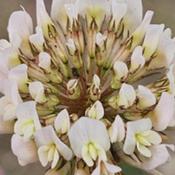 |
White Clover (Trifolium repens) |
Have Perennials Edibles Flowers Native Wildflowers |
||
 |
Red Trillium (Trillium recurvatum) |
Have Perennials Flowers Native Wildflowers Plants Successfully Growing |
May 1, 2021: Bloomed | |
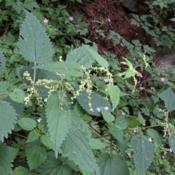 |
Stinging Nettle (Urtica dioica) |
Have Perennials Dye Edibles Fiber Medicinal Tea Native Wildflowers Herbs Plants Successfully Growing |